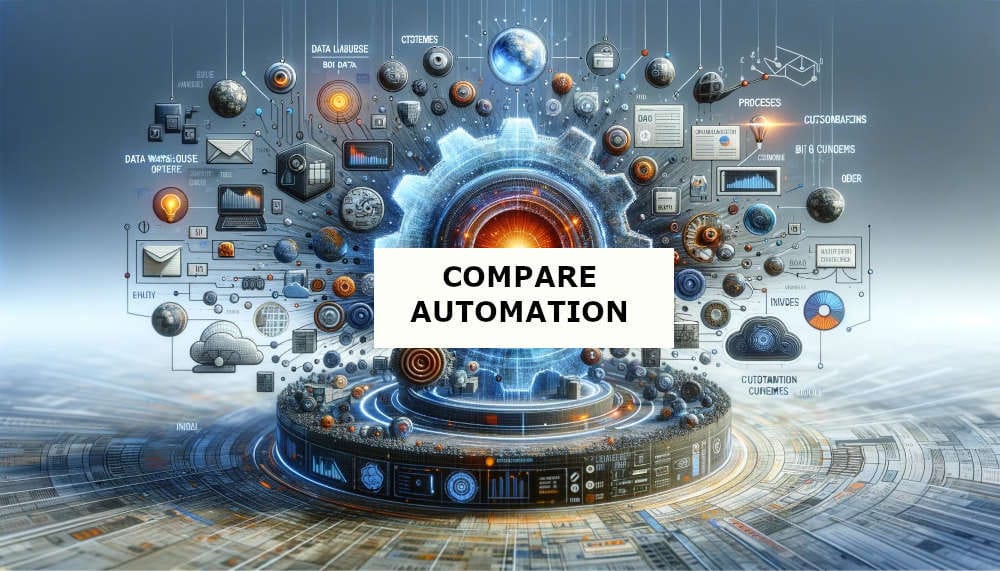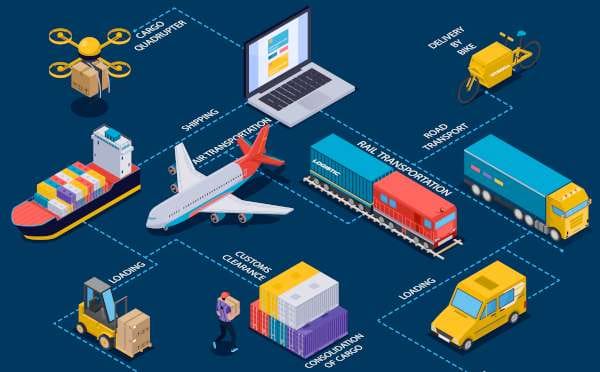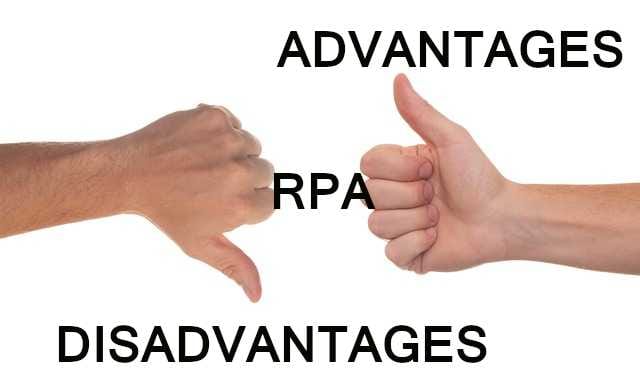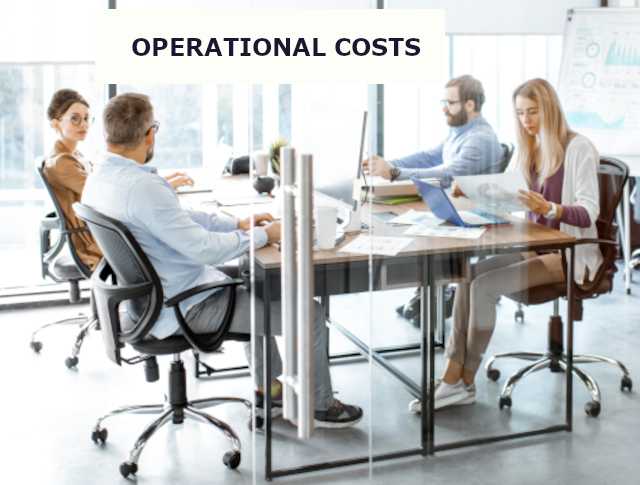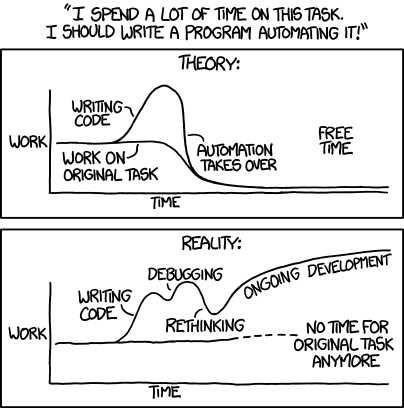Benefits of RPA
What are the Benefits of RPA (Robotic Process Automation)?
This question is often asked. In a typical answer, there is a focus on cost savings but actually there are other factors which are potentially more important.
The benefits are categorised into two groups, Productivity and Quality.
PRODUCTIVITY BENEFIT
RPA is effective for repeatable processes which have predictable interactions with IT applications.
Why not amend the IT applications and remove the need for RPA?
Such processes can lack the scale or value to warrant change by traditional IT development.
Where Cloud applications are involved, there may not be any provision for change or custom development.
RPA tools can improve the efficiency without changing the underlining IT systems. The automation can be described as “Non-invasive”.
Deployed RPA software is normally called a “Robot”.
Robots do what a human can do, by interacting with IT applications through a user interface and following rules to make decisions.
The software robots perform the “Manual Work” that people would otherwise undertake.
Unlike a human, Robots do not need to sleep so they can work 24 hours a day.
Robots do not have holidays or go sick they can operate 365 days a year. In reality, there will be some periods of down time to allow for software upgrades.
In a typical week, a person might work 40 hours whereas an RPA Robot can work 7 x 24 = 168 hours. That is 4.2 times the capacity of a person.
RPA Robots work at computer speed. RPA Robots are up to 10 times faster than a person to interact with the application User Interface. The speed does depend on the performance capability of the system.
If the RPA Robot is performing the work, the person is available to do other work. This has increased the productivity of the business. An Automated process requires less resources from the business to complete tasks, so it is is more “Efficient”.
QUALITY BENEFIT
Unlike a human, RPA Robots do not get tired and slow down. RPA Robots do not lapse in concentration and make errors. RPA Robots deliver actions consistently which increases the quality of the outcome. Human error is eliminated.
Research indicates that in a typical repetitive task, humans will on average have a 4% error rate. The costs associated with correcting such errors can be significant.
In some circumstances there is an extra benefit. RPA Robots treat everybody the same. Details on “VIPs” or “Sensitive information” is not leaked through a casual conversation.
This confidentiality benefit of RPA Robots also helps where there is staff change. It avoids the potential for information to go with staff to competitors.
RPA Robots can easily create a log of all the actions they complete. This can be used to monitor activity levels in real time. Asking a person to do a task and log all the details about the task, would increase the time taken to perform the work significantly. It is a feature that is really important for compliance type tasks.
WHERE ARE THE BENEFITS OF RPA FOUND?
It is the following task qualities which make a process a good option to automate:
- Repetitive – e.g. More than 10 times a day
- Prone to error
- Rules based – predictable outcome for a given input
- Involve digital data
- Time critical
- Suffers from seasonal peaks
Entire end-to-end processes can be performed by RPA Robots with no human interaction. This can enable people to focus on the exceptions.
Ether Solutions believes that the typical 80:20 rule should be applied when considering process automation. Manual activity can be used to process exceptions and the more difficult / complex cases.
To fully realise the benefits from automation, the staff time that has been released, needs to be re-deployed effectively. The combination provides the overall benefit of the business.
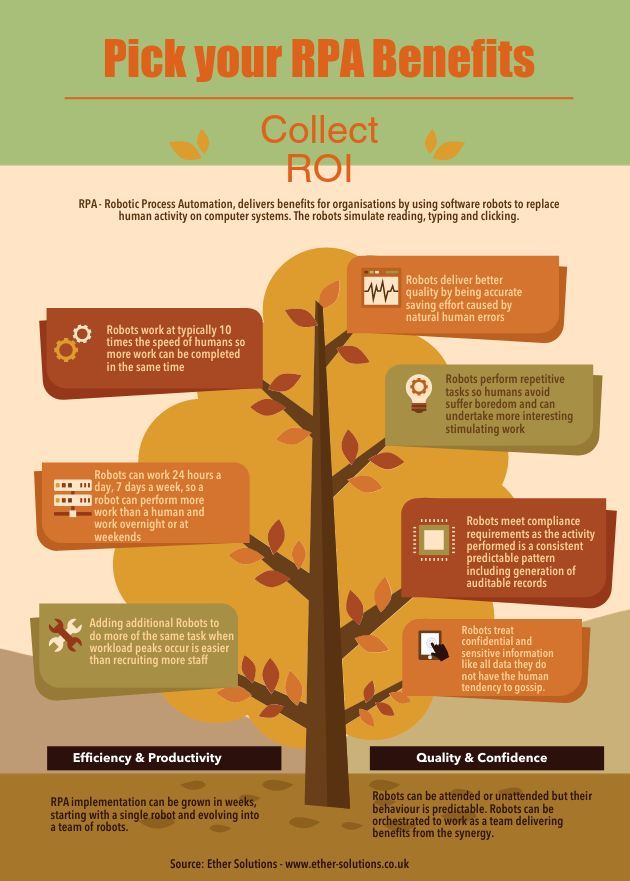
The above infographic conveys the different aspects that can contribute to the overall Return on Investment (ROI) that can be achieved from an RPA implementation. The text from the infographic is repeated below in order ensure it is available for screen readers, etc., where the extraction of text from images is difficult.
RPA - Robotic Process Automation, delivers benefits for organisations by using software robots to replace human activity on computer systems. The robots simulate reading, typing and clicking.
What are the Benefits of RPA worth?
RPA Robots replace the "Manual Work" that people would otherwise complete. This is the starting point for calculating the value of the benefits is the staff cost to perform the work.
This can start as a simple calculation. It becomes a more complex calculation by including staff holiday, sickness, training costs, management costs, etc.
The benefit that is delivered from increased consistency with the removal of the human efforts can also be difficult to quantify. An analysis of the costs to correct such errors in previous months is probably the most reliable method to quantify the value of the benefit.
When automation of a business process enables the timescale to be altered, there can be both specific benefits that are directly attributable to the change in timescale plus indirect benefits in other business processes.
Ether Solutions provides an RPA ROI Calculator that enables an estimate of the benefits arising from the automation to made. For most RPA projects the ROI is sufficiently strong that precise calculation of the smaller benefits is not necessary.
Please contact us to discuss how RPA Robots could be used in your business to enhance Productivity and Quality - 0845 643 4410.


